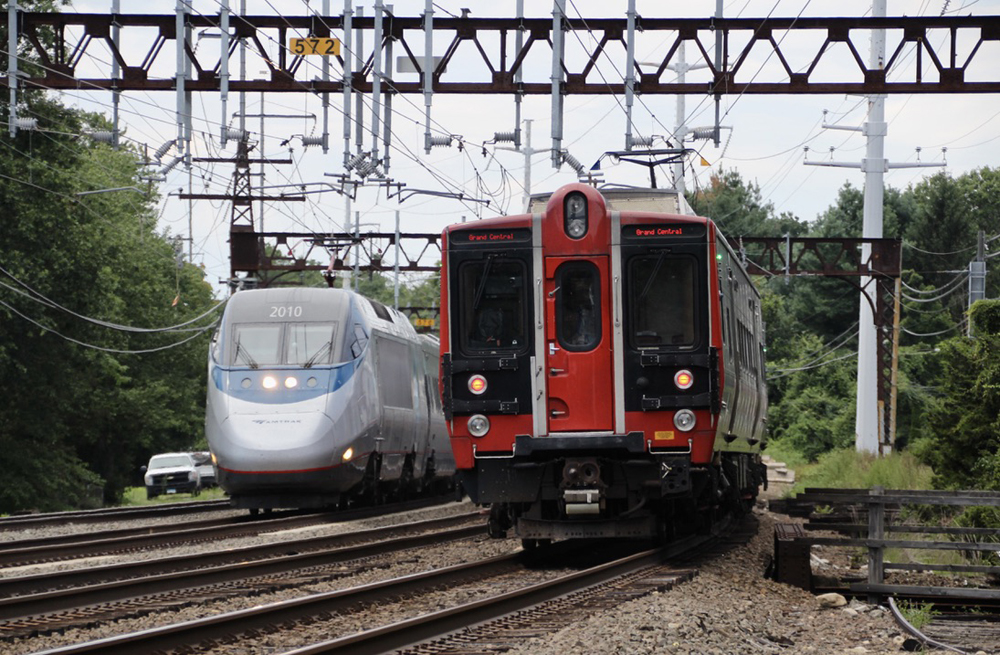
HARTFORD, Conn. — Connecticut has approved more than $1.1 billion in state bond funding for transportation projects, Gov. Ned Lamont has announced.
Funds will help meet matching requirements for federal money available through the Bipartisan Infrastructure Law, which could help the state land more than $2.5 billion in federal funding.
“The $1.1 billion in state bond funding we are releasing today positions our state to create the transportation network of the future, which will connect people to jobs, employment, and all our state has to offer,” Lamont said in a press release. “This funding will help bring upgrades to a wide variety of improvements across our transportation network, including roads, bridges, and public transit. Notably, it will support our ongoing goal of putting the infrastructure in place that will help reduce travel times between New Haven and New York. By leveraging all federal dollars available through the Bipartisan Infrastructure Law, we can bring significant improvements to our state’s transportation system while lessening the burden on Connecticut taxpayers.”
Specific funding for rail projects includes $398.1 million for 13 projects to upgrade infrastructure on the Northeast Corridor, which will provide a match for up to $2.1 billion in federal funds and $15 million for three projects to upgrade New Haven Union Station. Another $9 million is earmarked for demolition of a parking garage at the Stamford Transportation Center, Connecticut’s busiest rail station. That demolition will make room for transit-oriented development adjacent to the station.
State Transportation Commissioner Garrett Eucallito said the funds mean “Connecticut residents will see a substantial increase in projects that will improve transportation access, grow the economy, increase safety and reliability, and improve quality of life. This funding is setting the stage for the next 10 years of needed projects that will transform our infrastructure with improved roads and bridges and a robust multimodal transportation network that is accessible to everyone.”













I bought my house mainly on location. We can walk or ride bike for almost everything. Local park at the end of the street. Costco a little over a mile away.. While everyone else is fighting traffic we cruise in on bicycles with a trailer in tow. Pizza places, restaurants, drug store, doctor, grocery all within a mile. It’s great. Until more people give up the desires to have five acres and a McMansion ( today’s 40 acres and a mule), we’ll never solve our traffic problem.
From the Stamford Advocate: “The Stamford Transportation Center — the second-busiest Metro-North Railroad station after Grand Central Terminal — will soon have a new $81.7 million, 928-spot garage to replace its existing one on Station Place.”
$9 million to demolish a garage.
Love government. They really know how to spend money
Hey guys, thanks for your thoughtful responses to my earlier post (below). Thinking about my earier post, I ought not to leave out my favorite ride, which is United Airlines. I’m convinced that the Denver Airport consumes far more money and far more energy on the ground than in the air. Concrete has a HUGE energy component (to cook cement, to haul cement and aggregate, to pump water, and to place concrete). Denver International Airport must have more concrete (and steel and glass) than some nations. DEN (the airport code, locals know it as DIA) has its own private freeway which is several miles long, and has its own freeway interchange south of the terminal. (There’s also a Light Rail line which is not heavily patronized.)
Last week some eco-nut organization said we should limit ourselves to four airplane trips lifetime. They may be wackos but they’re clearly onto something. Rather than micromanage a lavish lifestyle (sustainable jet fuels, lumbering EVs on the freeway) the key to our global survival is to consume less.
Oh, and look at the amount of cooncrete going into thos HUGE plants for auto EV batteries. Leaving aside the fact that battery storage is about the least efficient means of energy that can be imagined, look at those plants. They’re the size of the Pentagon and Taj Mahal combined. And they’re located in areas of lots of farmland to chew up and but no people.
Two or three generations ago, Polish immigrants lived in Hamtramck (Michigan) and walked to work at Dodge Main. While across town, Yemeni immigrants walked to “The Rouge” from their Dearborn homes. Now in 2023, Michigan and Ford and the ChiComs are working together to build an EV plant — not in Hamtown, not in Dearborn, not in Detroit, but in Marshall, Michigan. Do you know where Marshall, Michgan is? Has anyone even heard of it? I needed to look at a map. It’s at the interchange of I-94 and I-69, some miles east of Battle Creek. The average worker will have a twenty-mile commute — each way.
Good point Charles. This is asituation that both urban and transportation planners have not been able to figure out or come up with or a perfect solution to this problem. For every rail line built or new station added, there are always parking lots and in some cases like Stamford parking garages filled up with cars. People will still use their cars to drive to the station and then board their train. As more folks move to the surburbs and the surburbs reach out ever further and further away from the city or business districts, the need for more and better reliable public transportation grows especially rail. Now I know you can’t build a rail line in every place or on every street or even in areas where public oppostion will be expected. However there must be other methods and planners must be able to come up with creative solutions to mitigate and ease the ever growing problem of saturation of too many cars and parking lots creating massive traffic jams aas well as tying up local streets and neighborhoods with cars and especially when people are transferring from the train to their cars and vice versa. This problen is especially acute on Long Island where every station is crowded with cars. Another situation like this is also on Staten Island where folks drive to the ferry at St George and park their cars and then board to ferry to Manhattan. It seems like no matter where you go or take the train, there will always be cars parked or arriving at the station and more coming. You can go back over a hundred years ago when there was this problem or situation but maybe not as bad when folks drove their horse and buggy to the station and either dropped off their people to catch the train or picking up folks from the arriving train. And that is the problem which will be with us. How to ease and solve the problem of getting folks to and from the train station to their final destination and reduce the amount of auto traffic and congestion
Joseph C. Markfelder
Dumb question. With the torn down parking gasrage where do commuters go to park? Will some drive to NY city?
I think the idea is to provide better connections and prioritize active transportation as well as get realestate taxes from apts/condos. Hopefully some affordable housing as well.
A new parking garage on the other side of the tracks is nearing completion.
Parking garages don’t seem to last very long due to the effect of road salt on the structure. The one being torn down has multiple issues and is at the end of its life.
Glenview Illinois, (like Stamford, CT) is also very very very very wealthy.
Do the math.
The article reveals an unpleasant truth about America: rail transportation in this country doesn’t stop people from driving their cars. It relocates the destination of the private autmobile to parking lots or parking garages at rail stations. Stamford is a dense, livable urban area. No one wants to have that traffic jam going to that parking garage scheduled for demolition. No one wants a giant parking garage where there ought to be restaurants and stores and apartment buildings. But that’s what reality is.
Much closer to my home is Glenview, Illinois, a gorgeous, high-density suburb served by both METRA and Amtrak, the very avatar of what suburbs should look like. It turns into a traffic jam when METRA trains arrive in the afternoon rush.